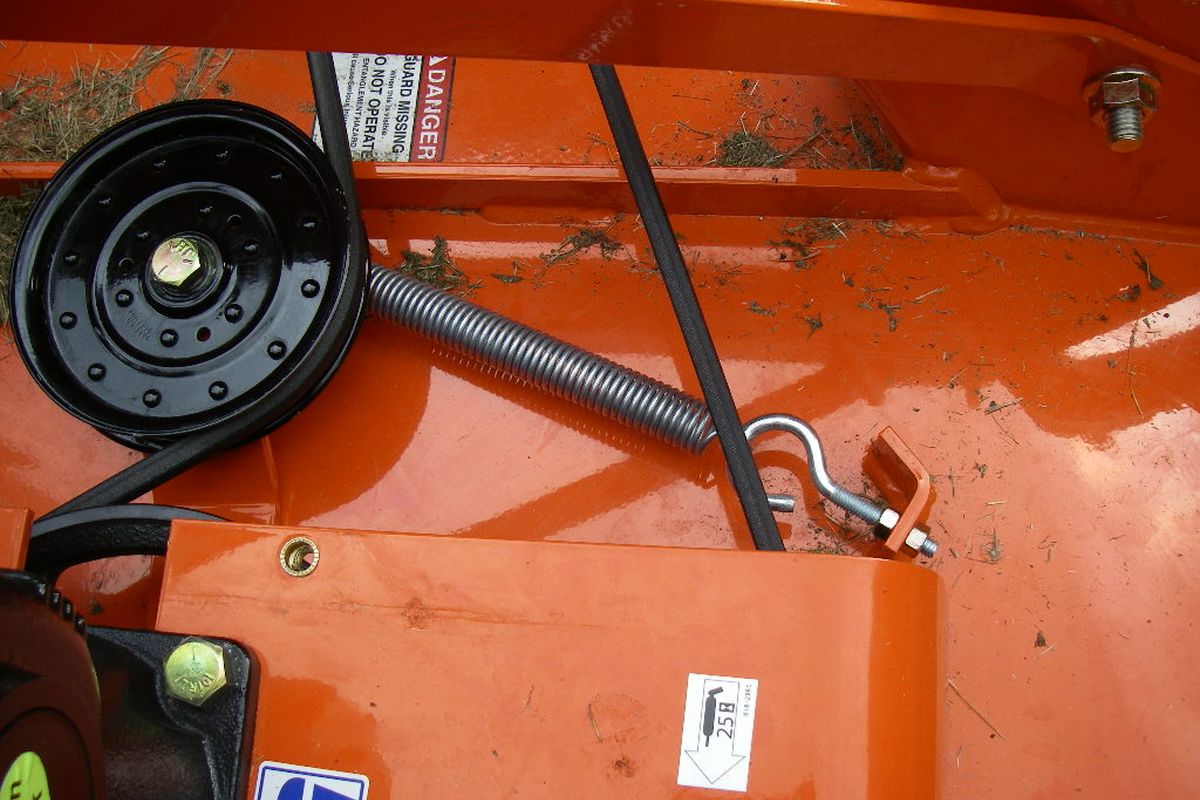Achieving the ideal tension for your mower deck belt is a delicate balancing act. It must be tight enough to prevent slippage while avoiding excessive wear on both the belt and mower pulleys.
In this article, we’re going to explore the technical nuances of mower deck belt tension so you can effectively preserve your mower.
Understanding the Lawn Mower Deck Belt
The lawn mower deck belt plays a crucial role in lawn care. This flexible loop connects the engine’s power output to the mower’s cutting blades.
Operating under tension, it imparts the force needed to rotate the blades and facilitate grass cutting. Various types of mower deck belts exist, such as V-belts, multi-ribbed belts, and cogged belts, each with distinct characteristics and tension requirements. Understanding these differences serves as the foundation for maintaining the right tension.
Striking the proper tension balance is essential. Unlike a broken belt that halts blade operation, an overly loose belt only slightly hampers functionality or slips, resulting in slower or non-existent blade rotation. This leads to uneven or incomplete grass cutting, leaving your lawn untidy.
Conversely, an overly tight belt strains the engine and belt, potentially causing premature wear and mechanical failures like damaged pulleys or an engine breakdown. Thus, maintaining accurate tension is vital for optimal performance and the mower’s durability.
Signs of Incorrect Mower Deck Belt Tension
Identifying signs of incorrect belt tension can prevent costly repairs and downtime. An improper or inadequately tensioned belt may cause patches of uncut grass, a clear performance indicator.
Unusual noises like rattling or thumping may arise, and the belt could slip off the pulleys. Excessive belt tightness may lead to pronounced mower vibrations, accompanied by high-pitched squeals during heavy use.
Rapid belt wear, evidenced by fraying or cracking, is another potential outcome of excessive tension.
How to Check Mower Deck Belt Tension
Evaluating belt tension requires the use of simple tools such as a tension gauge and ruler. Ensure the mower is off and cooled before proceeding. Identify the longest belt span between pulleys, press down moderately on the belt using the gauge, and measure deflection (how much the belt moves downward).
Generally, a 1/2-inch deflection suffices for most mowers. Deviations indicate potential tension adjustment. While this method suits most mowers, consult your owner’s manual for specific manufacturer instructions.
To correct loose belt tension, you’ll need some mechanical prowess and a wrench. Start by locating the mower’s idler pulley, often with an adjustment bolt. Loosen this bolt to alter the pulley’s position, thereby adjusting belt tension.
Verify deflection with the tension gauge and repeat adjustments if necessary. Securely tighten the adjustment bolt afterward.
Maintaining Perfect Deck Belt Tension
Maintaining proper belt tension means you’ll have to conduct routine checks and adjustments. With time, the mower belt may stretch or wear, necessitating periodic tightening.
Replace the belt if there’s too much wear and tear, including cracks or fraying, or if proper tension persists despite adjustments. Always keep a spare replacement belt to avoid being stranded.
Avoid mistakes such as over-tightening, infrequent tension checks, and neglecting wear signs. Over-tightening accelerates belt and mower component wear.
Meanwhile, irregular tension checks result in subpar mower performance, while ignoring wear signs can trigger belt failure and potential damage. Luckily, these are all avoidable with proper knowledge and regular maintenance.

